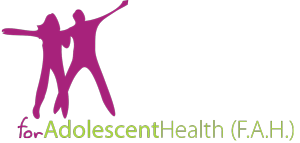- Details
- Hits: 2865
Adolescence
Adolescence is the time period between 11 and 18 years of life (WHO definition), characterized by critical physical and psychological changes leading to adulthood.
Adolescents are generally considered to be a very healthy group, with limited health needs. They remain medically underserved and their problems are seriously underestimated because of the following:
- The traditionally used health index (mortality rate) does not effectively reflect the adolescent health status
- Health indexes related to life quality are not easy to define
- Adolescents themselves are developmentally immature to look into the future. Communicable diseases and problems of childhood belong to the past, while health issues of adulthood seem very distant. They consider themselves «invulnerable» and do not demand promotion and protection of health services addressed to their age.
- Family can not really deal with the situation, as the adolescent takes total control of his or her health issues. Parents feel far more comfortable when focusing on school performance and activities - taking good health for granted.
Health problems in adolescence may result through a number of mechanisms:
- Most of the adolescents present problems relating to the normal physical or psychological changes of this period (acne, iron deficiency, anxiety excess).
- Disorders of normal puberty procedures may also occur at a significant number of teens (e.g. up to 50% of adolescent girls present with problems of their menstrual cycling).
- It is estimated that 10-12% suffers from severe chronic conditions. Adolescents with demanding and chronic problems need multidisciplinary support, so that they can come through the challenges of adolescent years in the most functioning and painless way for their situation.
- Ρre-existing, yet non-expressed physical or psychosocial pathologies may come to surface during adolescence because of the general lack of stability characterizing these years.
Environmental factors have significant impact on adolescent health and well-being. Adolescents are extremely sensitive to environmental influences as they have not yet fully developed all their cognitive abilities for evaluating information and life-models. It is therefore evident that behavior and health patterns of adolescents always reflect the status of their social environment and services provided to them.
Young people in modern societies are forced to come through the significant stages of adolescence, while living in a rapidly changing and unstable world: population mixing, decreased occupation possibilities, the divorce phenomenon, lack of social bonding - small families in large societies, technology progress and media power impacts.
Thus, a significant problem for modern youth globally is the fact that they are bombarded from an early age with social messages having formative effects, particularly at a time of experimentation such as the teenage years. Aggressive marketing targeted at this age group, combined with risk-taking behaviors that youngsters may normally develop as they struggle towards independence, lead to the emergence of «new morbidities». These conditions include problems such as accidents, eating disorders, sexually transmitted diseases, unwanted pregnancies, substance abuse, and mental health issues. Although these conditions are not «classic» medical illnesses, they seriously affect physical and mental adolescent health and result to decreased future productivity and employment opportunities. Of great interest is also the fact that a large number of the problems rising in adolescence can be preventable.
Some of the most crucial problems resulting from adolescent high-risk behaviours in Greece - and globally - are the following:


























